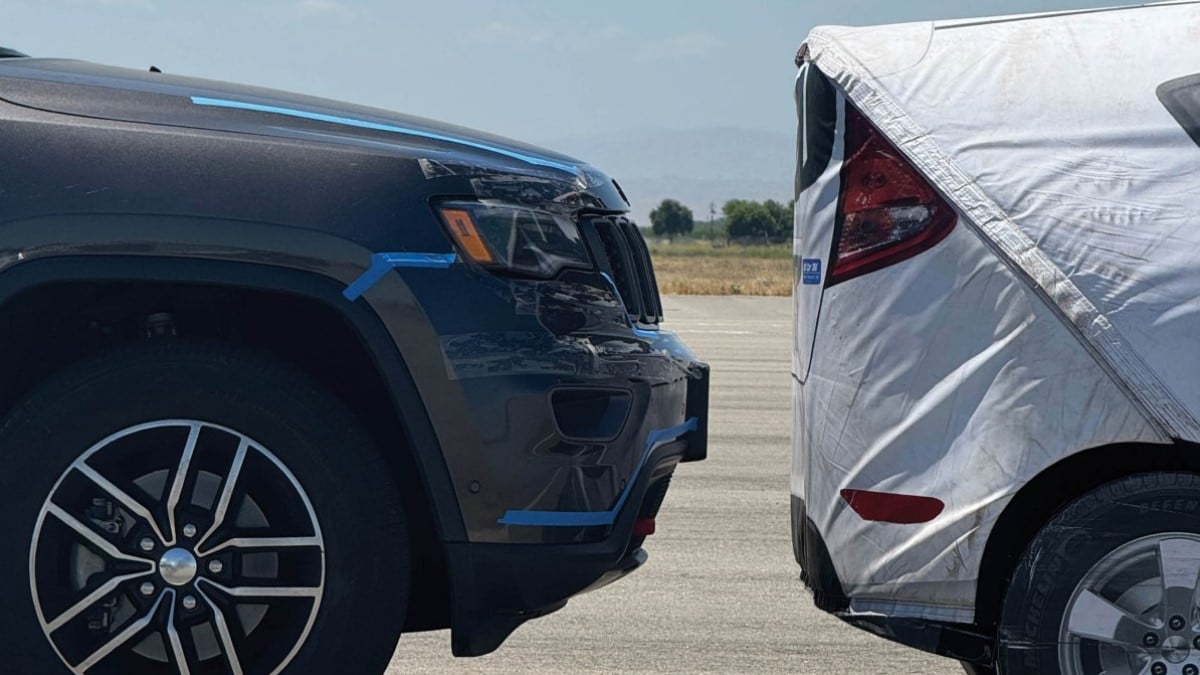
According to a new round of AAA tests, automatic emergency braking systems are getting better, but they still have room to improve.
That improvement is likely to happen soon.
What Is Automatic Emergency Braking?
AEB systems use sensors to detect possible collisions and brake to avoid them. Sometimes, they slow a car enough to prevent a collision. When they don’t, they can still slow it enough to lessen the severity of a crash.
Related: How Does Automatic Emergency Braking Work?
These systems were once common only to luxury cars, but nearly every vehicle on the market for model years 2024 and 2025 advertises automatic emergency braking.
Even the least expensive new cars, like the under-$18,000 Mitsubishi Mirage and Nissan Versa, have AEB.
Unfortunately, the term has become something like the word “natural” on a food label. No legal requirement governs what it means. AEB can vary widely from one car model to another.
The systems also change yearly as automakers improve the hardware and the software that controls it.
AAA’s Testing
AAA researchers wanted to find out how much AEB systems are improving.
AAA put two groups of cars through a series of AEB tests. Both groups included cars of the same make and model. One group was from model years 2017 and 2018, and the other was from model year 2024.
The new group outperformed the old.
Tested cars included:
• 2017 and 2024 Jeep Cherokee
• 2018 and 2024 Nissan Rogue
• 2018 and 2024 Subaru Outback
They drove each car toward a dummy car designed so that sensors would detect it as if it were a normal car but made soft enough to hit safely, conducting the drives at steady rates of 12, 25, 35, 45, and 55 mph.
The Results
“New model vehicles (2024) were nearly twice as likely to avoid a collision as older model vehicles,” the researchers write.
Every 2024 car avoided a collision at 12, 25, and 35 mph. Older models avoided 73% of collisions at 12 mph, 47% at 25 mph, and 33% at 35 mph.
Above 35 mph, things got more targeted, as researchers only tested vehicles that avoided collisions at lower speeds.
“Three out of four vehicles evaluated were able to avoid a collision at 45 mph. The test speed was increased to 55 mph for those vehicles that avoided a collision at 45 mph. None of these remaining vehicles tested could avoid a collision,” AAA says.
Limitations of AEB Systems
Some automakers now advertise AEB systems capable of detecting bicyclists or pedestrians, but AAA did not test those claims. Researchers tested only forward collision avoidance systems.
However, an insurance industry safety lab, the Insurance Institute for Highway Safety (IIHS), has tested those claims. In testing earlier this year, the IIHS found AEB systems were much less successful at detecting a motorcycle.
Some also advertise reverse AEB systems intended to prevent drivers from hitting a car when backing up. Those systems struggled in AAA testing in February.
They’re Likely to Keep Improving
Until now, AEB has been unregulated. In April, the federal government announced rules that will mandate AEB on all cars sold in the U.S. beginning in 2029.
Mandating something everyone already does sounds redundant, but the National Highway Traffic Safety Administration (NHTSA) has a reason for the move.
The new rule will require cars to pass specific tests.
“The new standard requires all cars be able to stop and avoid contact with a vehicle in front of them up to 62 miles per hour,” NHTSA says. Cars must also “detect pedestrians in both daylight and darkness. In addition, the standard requires that the system apply the brakes automatically up to 90 mph when a collision with a lead vehicle is imminent and up to 45 mph when a pedestrian is detected.”
Though AAA’s tests showed improvement, none of the cars they tested could pass that test.
Automakers have five years to improve their AEB systems enough to pass it.

